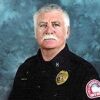Whether applying for, sustaining or surviving a career in the fire service, fitness is paramount. It guides us through the toughness and grit needed to accomplish the straight-forward tasks of line firefighters, and as officers it gives us stamina to command.
Unlike in past generations, firefighter health and fitness is becoming a top priority as we head into the 21st century. Whether because of insurance programs, departmental philosophy or the self-conscious behavior instilled by social media, most progressive fire departments are creating effective and sustaining wellness programs.
Starting with baseline physicals and moving toward individualized exercise programs, every firefighter today has the opportunity to progress down a path of enlightened medicine as well the physical benefits of increasing their strength, balance and movement.
Physical evaluation
Yearly medical exams provide an accurate picture of a firefighter’s baseline health and applying specific wellness programs can improve this medical picture year to year. Studies have shown no matter what an initial evaluation indicates; improvement through fitness programs, meal-planning specific to individual dietary needs, medicines, and the control or elimination of counterproductive habits provide significant increases in overall health.
Cardiac health, oxygen volume, stamina, endurance and strength can all be evaluated utilizing medical exams and tests geared specifically to the firefighter. Stress tests, body fat analysis, cholesterol and triglyceride ratios, and even sugar production are just a few of the values providing greater understanding into what makes a healthy firefighter.
From these test results come valuable benchmarks and identifiable markers designed to indicate risk factors of conditions such as cardiovascular disease, high blood pressure, diabetes, obesity and metabolic syndrome. Some of these disorders are without signs or symptoms, so measurement becomes even more important.
The most famous silent killer, cardiovascular disease, remains the leading cause of death in firefighters as well as the general population. Of concern is that 37 percent of firefighter fatalities are due to sudden cardiac death, while in the general population, the rate is only 13 percent – and half of these give no warning to the victim.
Firefighter fitness program
In addition to taking care of your medical conditions, you must take a long, hard look at your fitness level, keeping in mind all things body appropriate. Age, previous injuries, body type and job requirements all factor into what is an appropriate level of physical ability. Medical evaluations will give you a benchmark from which to begin accepting a realistic set of fitness goals and time-specific exercises.
You should face this personal dragon like you do all others in your career. Use what makes you great, brutal honesty stripped of ego and an unwavering commitment to becoming a better firefighter.
As an older firefighter, you may be more focused on losing weight and improving flexibility than bench-pressing 300 pounds just to impress your crew. Vertical strength and balance may ensure an injury-free year – a more worthy goal than bulking up like a linebacker.
Health and wellness resources
Whatever the personal challenges that come with accepting a new standard of fitness, there is help available. Remember, the baby boomers are the new target center of the population and there is a great deal of available information on keeping young and healthy whatever your age.
Local fitness instructors as well as fellow firefighters or peer-fitness instructors can help with monitoring and providing appropriate expectations.
Remember, it is never too late. You may not start out jogging four times a week, but rather walking six times a week. You may never lift weights with the new recruits again, but a combination of stretching and strength exercises designed specifically for your body will put you right back in the game.
One advantage to having served years in the fire service is that you can design a program that works best by simply using your greatest asset: experience. What worked for you in the past? What exactly needs to be modified to be successful? For many firefighters, this means speed walking instead of running and using fixed-weight machines instead of free weights to compensate for old injuries.
Commit to extending your career
Whatever the challenges, the key to conditioning is to realize you are never going to do it as fast or as strong as you once did, no matter what your age; but you can aspire to do it as efficiently and with fewer consequences.
With proper exercise, your bunker gear gets lighter, you can climb and crouch with less effort, SCBA bottles last longer and decisions are not hampered by fatigue.
So do yourself a favor and look in the mirror. Do some sprints at the local high school track and take your pulse. Realize that you must commit yourself to a life of renewed physical enthusiasm if you are going to continue in your job and career as firefighter.













